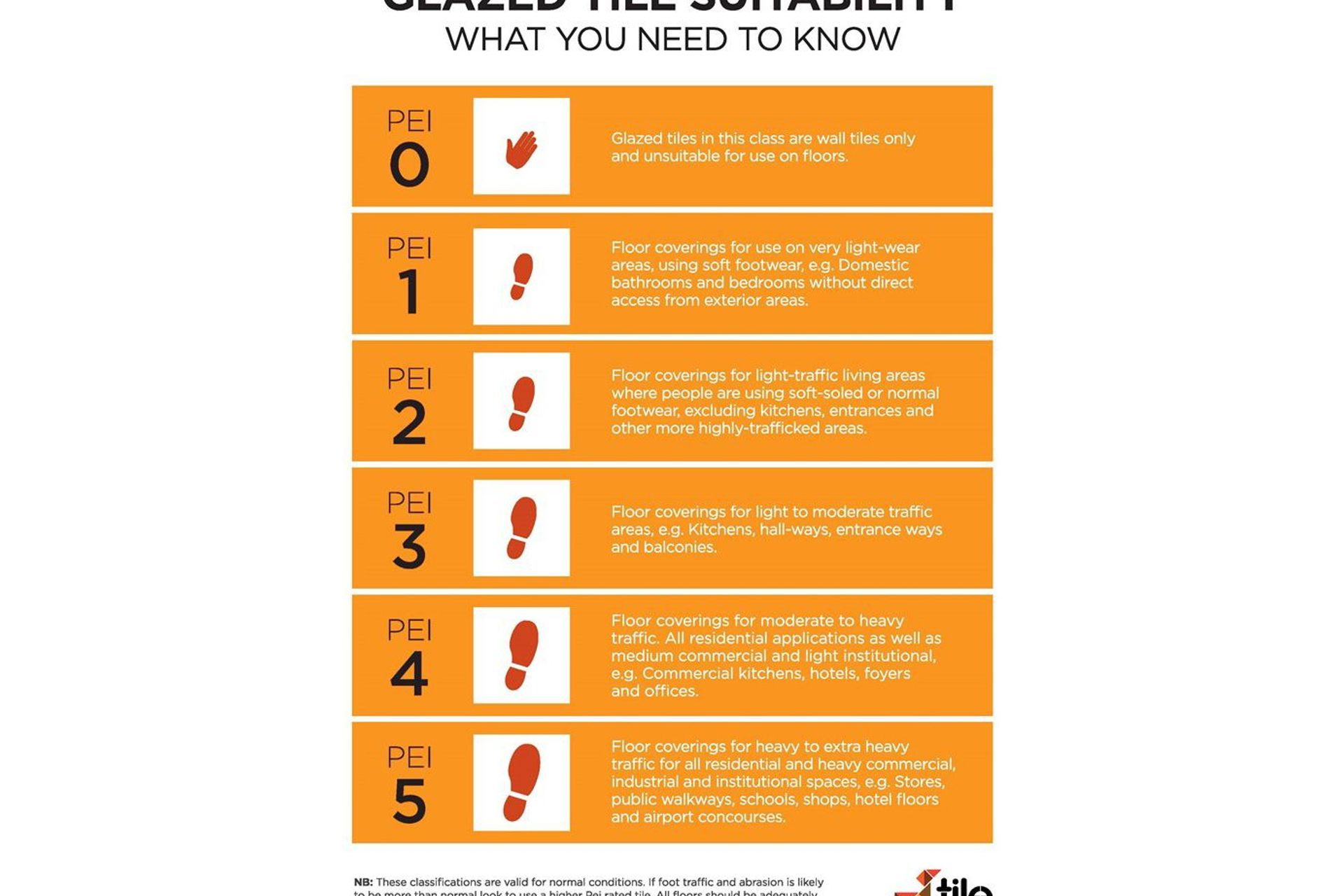What is PEI rating?

What does PEI in tile ratings mean?
PEI (Porcelain Enamel Institute) ratings help you determine the hardness and durability of the tile. This is crucial because not all tile can be used in all areas. PEI ratings act as a kind of shortcut to figure out where the tile can be installed. Tile that experiences much foot traffic should be harder and denser than than that receives no foot traffic. Tile installed on a wall receives no foot traffic and, in fact, almost no wear of any kind. From a technical perspective PEI ratings are actually determined by a measurement of Abrasion Resistance (EN154) measured on a machine like the one above which counts the number of revolutions under a standard abrasive load. When the tile shows damage the revolutions are counted, (from 150 to 1500+) this gives the PEI rating.
From this scale you can see the numbers of revolutions required in the testing method to abrade the tile.
But some tiles, classed as PEI 4, could possibly only withstand abrasion up to 2000 revolutions while others could withstand abrasion far in excess of 1500 in fact as much as 96 000. This is why PEI 5 is being introduced.
The new ISO product standards (Project ISO TC/189) envisage the introduction of a further class of resistance, class PEI 5, to which tiles meeting the following conditions at 12 000 rpm will be assigned:
1. Alterations must not be visible at a standard distance.
2. The surface subjected to abrasion must pass a cleaning test with the staining agents chromium green in light oil, iodine in alcohol solution, and olive oil. This new class, therefore, also takes into account the effects of abrasion on susceptibility to soiling. The introduction of class PEI 5 fulfills the need to highlight more clearly, in relation to performance, the superior characteristics of ceramic glazes for technical applications developed in recent years.

The method was developed on the basis of the claim that the degree of deterioration of a floor should not determined by the reduction in its thickness, but the visible difference in appearance between the worn surface and the unworn surface, assessed at a defined distance under standard conditions of lighting.
It is important to stress that, for the same degree of abrasion, wear is invariably more visible on dark surfaces.
For this reason, the PEI value is shown in tile catalogues as the requirement for the individual article, rather than for the series as a whole which may have lighter and darker tiles.
PEI 0: Glazed tiles in this class are wall tiles only and unsuitable for use on floors.
PEI 1: Up to 154 revolutions. For use on very light-wear areas, using soft footwear.
PEI 2: 300, 450, 600 revolutions Light traffic. Very light-wear, mainly bathrooms and areas using soft-soled or normal footwear. Wall use and residential floor applications.
PEI 3: 750, 900, 1200, 1500 revolutions Light to moderate traffic. Average domestic homes. Countertops, walls, and floors for normal foot traffic.
PEI 4: 1500+ revolutions Moderate to heavy traffic. All residential applications as well as medium commercial and light institutional.
PEI 5: 12000 revolutions Heavy to extra heavy traffic. All residential and heavy commercial and institutional foot traffic, stores, entrance halls, shops & hotel floors.
